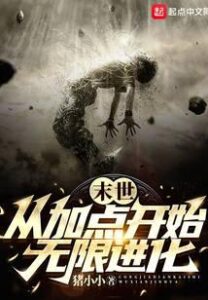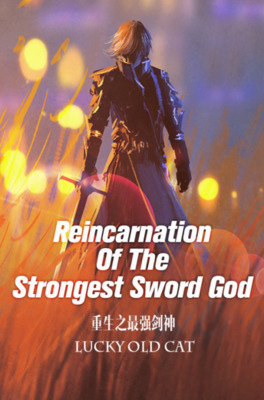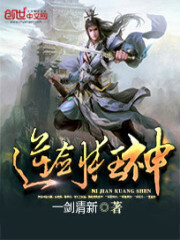Chapter 273 Railway Tracks
The German defense line quickly collapsed under the impact of T34, but Shulka knew that the battle was not over.
"Tracks, blow up the rails!" Shulka ordered loudly.
Following the infantry, the order was immediately communicated to the tank through the tank phone. The No. 239 tank found a position and then turned an angle, and fired a shell forward with a "boom".
A railway track was immediately twisted and broken.
However, as Shulka and others guessed, the Germans built many railway tracks here layer by layer... In fact, the German army's railway tracks are not three, but five, and there are even forks between the tracks. can be converted.
This can obviously increase the fault tolerance rate of the rails. For example, if a certain section of the rail is blown up, you can use the switchover device to avoid this section or even several sections of the blown-up rail.
Then, the sound of the heavy track of the armored train came from the other direction. Several flares rose into the sky to illuminate the bridgehead battlefield, and soon the sound of machine guns and cannons rang out...that was the rain of bullets from the armored train.
Things are not good.
This is not to say that the German army can turn defeat into victory and drive the Soviet army back to the other side of the river.
In fact, when the Soviet lurking troops rushed across the bridge, the Germans had no hope of holding Tver.
The weakness of the armored train is that it must rely on the rails, so it has many dead ends and places that cannot be reached. Soviet tanks only need to stay away from the rails to avoid the firepower of the armored train.
What's more, the Soviet army only needs to blow up the armored train on the rails to become a turtle in the urn.
The problem is... At this time, Soviet soldiers and tanks gathered densely around the bridgehead defense line: the hidden troops rushed forward to attack the German soldiers who had just defeated the bridgehead defense line, and the follow-up main force continued to flow across the bridge deck. Thousands of Soviet soldiers crowded around here.
And the weapons on the armored train are not only anti-aircraft guns.
It also has 12 7.62mm machine guns, two 37mm anti-aircraft guns, four 12.7mm anti-aircraft machine guns... the small-caliber anti-aircraft guns and four anti-aircraft machine guns are used for air defense, and of course they can also fire flat on infantry. They are even captured Equipment from the Soviet Army.
It is conceivable that if the armored train breaks into the densely populated bridgehead defense line, the equipment on the armored train will start a crazy massacre of the Soviet army and then walk away.
Major Michael, who commanded the armored train, thought so too.
He loudly ordered to each car through the microphone: "Everyone, prepare for battle, we will teach these Ivans a lesson before leaving here..."
So all types of artillery and machine guns on the armored train were ready for battle, and the engineers who usually held engineering shovels also picked up their rifles and put them on the perforation, and only waited for the side of the armored train to face the enemy before shooting bullets .
In the light of the flares, Shulka discovered that the rails that were blown up were not the rails on which the armored trains were running.
And it is obviously too late to blow up the track now, which means that tragedy is about to happen.
At this critical moment, Shulka loudly ordered the tank follower: "Drive the tank onto the track, the one on the left!"
The tank couldn't help being stunned after following, but still conveyed the order: "Drive the tank onto the track, to the left, at a distance of 20 meters, and move quickly!"
Shulka thought that Fedosiev would refuse to carry out this order.
First of all, it is very dangerous to do so... Although the armored train can't penetrate the armor of the tank, but the high-speed armored train with high mass has great kinetic energy. If it hits the tank, no one will be spared.
Secondly, Fedosiev had many reasons for refusing to execute the order, such as the noise was too loud to hear clearly, or the response was not fast enough.
Even Fedosyev only needs to be late to order the armored train to be able to roar past it.
But that's not the case.
Tank No. 239 immediately began to accelerate, and then turned to "long" and rushed to the left railway.
The observers on the armored train couldn't help being shocked when they saw this, and immediately reported to the power compartment through the microphone: "Stop, stop immediately! There is a traffic jam ahead..."
The power car of the armored train is in the middle of the train, so the driver cannot see the road ahead, and must cooperate with the observers in the front of the car or in the watchtower of the second car to move forward... There are many cases of armored trains running over landmines. Therefore, often the first car is a car that is used to smash landmines or break through obstacles.
At this time, the German army was fighting on the front line, and this carriage was not added for the convenience of movement.
But of course, even if this carriage is attached, it will not be able to knock over a tank without damage.
The total weight of the T34 tank is 26 tons (1941 model). After the train hits, it is more likely to derail and roll over instead of passing.
Then the armored train slowed to a screech of brakes before Major Michael even knew what was happening.
"What's going on? Why slow down?"
"Major!" The observer had time to report: "They blocked the railroad tracks with tanks!"
Major Michael was stunned for a while before cursing: "These lunatics!"
The train gradually stopped, right in front of the No. 239 tank, the watchtower of the observer in the first compartment even directly faced the dark gun barrel of the tank, so scared that the observer hurriedly withdrew his head and fled backwards with his hands and feet, although he knew this There was no escape.
"Major!" The adjutant nervously suggested to Major Michael: "We can drive back..."
"It's too late!" Major Michael sighed and said, "Surrender!"
Major Michael is a smart man. Although the armored train can indeed go back, it is too late at this time... Of course, the rear rails will also be blocked or blocked by the enemy.
This is the weakness of armored trains. The enemy only needs to blow up the rails with an explosive package. Such a huge and heavily armored arsenal can only wait for death.
Sure enough, when Michael said this, there were several explosions on the other side, and then someone reported: "The rear rails were blown off, we have no way to escape!"
"Don't shoot!" Major Michael ordered through the microphone: "All personnel are not allowed to shoot... We are just engineers, and we have completed our mission at this moment of fighting. Now, we can't change anything, put down your weapons and surrender!"
The German soldiers were still hesitating, but after several tanks "rumbled" up and aimed their gun barrels at the perforations and turrets of the armored train at close range, they finally accepted Major Michael's "suggestion" to put one side White flags protrude from the turrets.
Soon there was cheers outside, and the Soviet soldiers embraced excitedly to celebrate the victory of the battle.
(end of this chapter)







